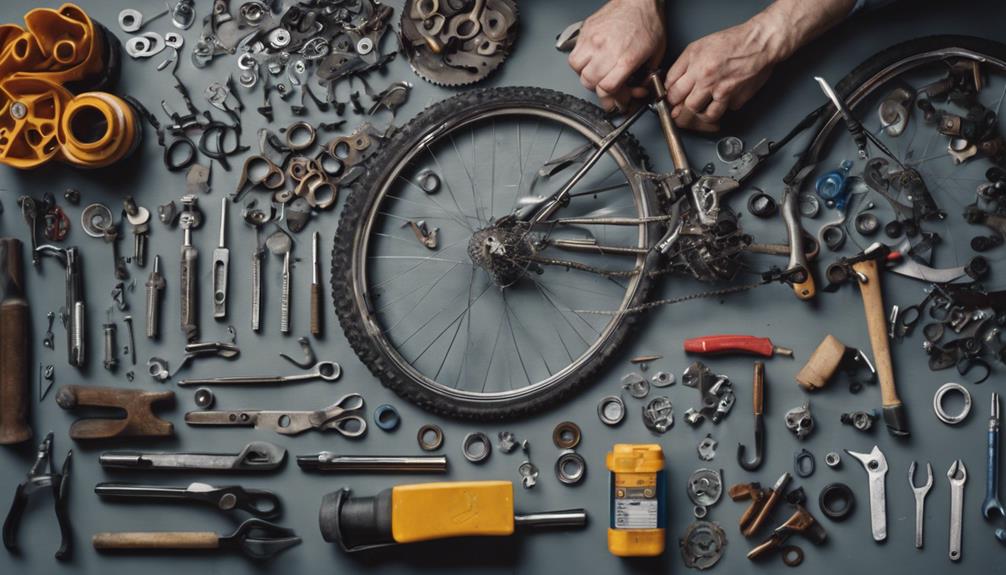Bicycle chains are a fundamental component of any bike, playing a crucial role in the transmission of power from the pedals to the wheels. Understanding how bicycle chains are made not only enhances your appreciation for this essential part but also informs your choices when it comes to maintenance and upgrades. In this blog post, we will delve into the intricate process of bicycle chain manufacturing, exploring the materials, techniques, and technologies involved.
The Importance of Bicycle Chains in Cycling
Before diving into the manufacturing process, it’s important to understand why bicycle chains are so vital. They are responsible for converting the energy exerted by the cyclist into motion. A well-made bicycle chain ensures efficient power transfer, improved performance, and ultimately a better riding experience. Whether you’re a casual rider or a competitive cyclist, the quality of your bicycle chain can significantly influence your ride.
Materials Used in Bicycle Chain Manufacturing
The manufacturing of bicycle chains begins with the selection of materials. The most common material used is high-carbon steel, known for its strength and durability. Some manufacturers also use stainless steel to prevent rust and corrosion, especially for chains designed for wet or humid environments. Additionally, some high-end chains incorporate materials like titanium or aluminum to reduce weight without sacrificing strength. The choice of material directly affects the chain’s performance, longevity, and maintenance needs.
The Chain Links: Design and Engineering
Each bicycle chain is composed of individual links, which are meticulously designed for optimal performance. These links consist of inner and outer plates that are connected by pins. The design of the chain links ensures that they can flex and move smoothly around the chainrings and cassette while maintaining structural integrity under pressure. Advanced computer-aided design (CAD) software is often used in the development phase to simulate and optimize the performance of the chain links before they are manufactured.
The Manufacturing Process: From Raw Material to Finished Product
The process of making bicycle chains starts with cutting the raw steel into precise lengths. These pieces are then shaped into the necessary components through methods such as forging and stamping. Forging involves heating the steel and shaping it under pressure, which enhances its strength. After the initial shaping, the components undergo heat treatment to improve hardness and wear resistance. Finally, the components are assembled into a complete chain, ensuring that each link moves freely and smoothly.
Quality Control: Ensuring Performance and Durability
Quality control is a critical step in the manufacturing of bicycle chains. Each chain undergoes rigorous testing to ensure it meets industry standards for safety and performance. This may include tensile strength tests, fatigue tests, and wear tests. Manufacturers also utilize advanced measuring tools to check the precision of each link and ensure that they fit together seamlessly. The goal is to produce a bicycle chain that can withstand the rigors of cycling while providing reliable performance over time.
Types of Bicycle Chains: Choosing the Right One
When it comes to bicycle chains, there is no one-size-fits-all solution. Various types of chains are designed for different cycling disciplines, such as road cycling, mountain biking, and track racing. Each type of chain has unique features tailored to specific riding conditions. For instance, chains for mountain bikes may be wider and more robust to handle rough terrain, while road bike chains are typically lighter and more aerodynamic. Understanding the different types of bicycle chains can help you select the best option for your cycling needs.
Maintenance Tips for Bicycle Chains
To prolong the lifespan of your bicycle chain, regular maintenance is essential. Keeping the chain clean and lubricated can prevent rust and wear, ensuring smooth operation. It’s advisable to clean your chain after every few rides, especially if you’ve been cycling in wet or muddy conditions. Additionally, regularly inspecting your chain for signs of wear, such as stiff links or elongation, can help you catch potential issues before they become serious. Replacing a worn chain promptly can save you from more costly repairs down the line.
Conclusion: The Art and Science of Bicycle Chain Manufacturing
In summary, understanding how bicycle chains are made provides valuable insights into their importance and functionality. From the selection of materials and design of links to the manufacturing process and quality control, every step is crucial in creating a chain that meets the demands of cyclists. Whether you are a seasoned rider or just starting out, knowing how to maintain your chain and choosing the right type can significantly enhance your cycling experience. The next time you hop on your bike, take a moment to appreciate the engineering marvel that is your bicycle chain.
